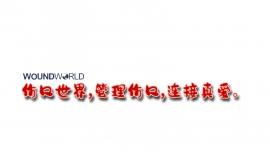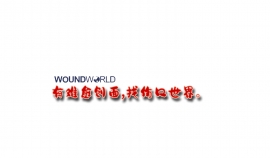文献精选
Lihong Chen MD1 | Shiyi Sun MD1 | Yunyi Gao MD2 | Xingwu Ran MD1
1 Innovation Center for Wound Repair, Diabetic Foot Care Center, Department of Endocrinology and Metabolism, West China Hospital, Sichuan University, Chengdu, China
2 Department of Medical Affairs, West China Hospital, Sichuan University, Chengdu, China
Correspondence
Xingwu Ran, MD, Innovation Center for Wound Repair, Diabetic Foot Care Center, Department of Endocrinology and Metabolism, West China Hospital, Sichuan University, 37 Guo Xue Lane, Chengdu 610041, China.
Email: 该Email地址已收到反垃圾邮件插件保护。要显示它您需要在浏览器中启用JavaScript。
Funding information
This study was partially supported by the Science and Technology Bureau of Sichuan Province (grant no. 2021JDKP004), West China Nursing Discipline Development Special Fund Project, Sichuan University (grant no. HXHL20005) and the 1.3.5 Project for disciplines of excellence, West China Hospital, Sichuan University (grant no. ZYGD18025).
Abstract
Aim: To estimate the long-term mortality and risk factors in patients with diabetic foot ulcer (DFU).
Methods: We systematically searched Medline (PubMed), Embase, Scopus, Web of Science, Cochrane Library, China Science and Technology Journal Database (CQVIP), China National Knowledge Infrastructure, the Chinese Biomedical Literature Database (SinoMed) and Wanfang Data from 1 January 2011 to 31 July 2022. All observational studies that reported long-term mortality of patients with DFU were included. Random effect models were used to pool the reconstructed participant data from Kaplan–Meier curves. The primary outcome was the long-term survival of patients with DFU. An aggregate data meta-analysis was also performed.
Results: We identified 34 studies, with 124 376 participants representing 16 countries, among whom there were 51 386 deaths. Of these, 27 studies with 21 171 patients were included in the Kaplan–Meier-based meta-analysis. The estimated Kaplan–Meier-based survival rates were 86.9% (95% confidence interval [CI] 82.6%- 91.5%) at 1 year, 66.9% (95% CI 59.3%-75.6%) at 3 years, 50.9% (95% CI 42.0%- 61.7%) at 5 years and 23.1% (95% CI 15.2%-34.9%) at 10 years. The results of the aggregate data-based meta-analysis were similar. Cardiovascular disease and infection were the most common causes of death, accounting for 46.6% (95% CI 33.5%-59.7%) and 24.8% (95% CI 16.0%-33.5%), respectively. Patients with older age (per1 year, hazard ratio [HR] 1.054, 95% CI 1.045-1.063), peripheral artery disease (HR 1.882, 95% CI 1.592-2.225), chronic kidney disease (HR 1.535, 95% CI 1.227-1.919), end-stage renal disease (HR 3.586, 95% CI 1.333-9.643), amputation (HR 2.415, 95% CI 1.323-4.408) and history of cardiovascular disease (HR 1.449, 95% CI 1.276-1.645) had higher mortality risk.
Conclusions: This meta-analysis found that the overall mortality of DFU was high, with nearly 50% mortality within 5 years. Cardiovascular disease and infection were the two leading causes of death.
KEYWORDS
cardiovascular disease, diabetic foot, mortality
Mandy Li Ling Tan, Jiah Shin Chin, Leigh Madden & David L. Becker
To cite this article: Mandy Li Ling Tan, Jiah Shin Chin, Leigh Madden & David L. Becker (2022): Challenges faced in developing an ideal chronic wound model, Expert Opinion on Drug Discovery,
DOI: 10.1080/17460441.2023.2158809
To link to this article: https://doi.org/10.1080/17460441.2023.2158809
© 2022 The Author(s). Published by Informa
UK Limited, trading as Taylor & Francis
Published online: 26 Dec 2022.
Submit your article to this journal
Article views: 37
View related articles
View Crossmark data
Full Terms & Conditions of access and use can be found at https://www.tandfonline.com/action/journalInformation?journalCode=iedc20
Mandy Li Ling Tana,b# , Jiah Shin Chinb# , Leigh Maddenb and David L. Beckerb,c,d a Nanyang Institute of Health Technologies, Interdisciplinary Graduate School, Nanyang Technological University, 639798, Singapore; b Lee Kong Chian School of Medicine, Nanyang Technological University, 308232, Singapore; c Skin Research Institute Singapore, Clinical Sciences Building, 11 Mandalay Road, 308232, Singapore; d National Skin Centre, Mandalay Road, Singapore
ABSTRACT
Introduction: Chronic wounds are a major drain on healthcare resources and can lead to substantial reductions in quality of life for those affected. Moreover, they often precede serious events such as limb amputations and premature death. In the long run, this burden is likely to escalate with an ageing population and lifestyle diseases such as obesity. Thus far, the identification of beneficial therapeutics against chronic wounds have been hindered by the lack of an ideal chronic wound animal model. Although animal models of delayed healing have been developed, none of these models fully recapitulate the complexity of the human chronic wound condition. Furthermore, most animals do not develop chronic wounds. Only the thoroughbred racehorse develops chronic ulcers.
Areas covered: In this review, the different characteristics of chronic wounds that highlight its complexity are described. In addition, currently available models reflecting different aspects of chronic wound pathology and their relevance to human chronic wounds are discussed. This article concludes by listing relevant features representative of an ideal chronic wound model. Additionally, alternative approaches for the development of chronic wound models are discussed.
Expert opinion: Delayed models of healing, including the streptozotocin diabetic model, skin flap model and magnet-induced IR models have emerged. While these models have been widely adopted for preclinical therapeutic testing, their relevance towards human chronic wounds remains debatable. In particular, current delayed healing models often fail to fully incorporate the key characteristics of chronic ulcers. Ultimately, more representative models are required to expedite the advancement of novel therapeutics to the clinic.
ARTICLE HISTORY
Received 5 October 2021 Accepted 12 December 2022
KEYWORDS
Animal models; biofilm infection; chronic wounds; delayed healing models; delayed wound closure; excessive extracellular matrix degradation; hyper thickened epidermis; increased senescent cells population; persistent inflammation
艾则孜●吾买尔,姜爱新,曹淑娟
(喀什地区第一人民医院眼科中心,新疆喀什844000)
[摘要] 目的:通过随机对照试验,观察氦氖激光在喀什地区弱视儿童中的治疗效果。方法:选取2016年2月至2018年11月期间就诊喀什地区第一人民医院符合纳排标准的弱视儿童,按随机数字表法,分为试验组(氦氖激光+弱视常规治疗组)与对照组(弱视常规治疗组),比较两组的弱视治疗效果。
结果:本试验成功纳入弱视儿童111例(177眼),其中试验组61例(97眼),对照组S0例(80眼)。与对照组相比,汉族试验组弱视儿童效果明显(P=0.023),维吾尔族试验组弱视儿童未见明显疗效(P=0.481);试验组与对照组在喀什地区不同年龄、不同弱视程度、不同弱视类型及不同弱视眼数儿童中未见明显差异(P>0.05)。结论:氦氖激光治疗喀什地区弱视儿童作用有限,为避免过度医疗,不建议在南疆地区开展。
[关键词] 氦氖激光;弱视;随机对照研究
Efficacy of helium-neon laser in amblyopia of Kashgar children: A randomized controlled trial
AizeziWUMAIER, JIANG Aixin, CAO Shujuan
(Ophthalmological Center, First People's Hospital in Kashgar, Kashgar Xinjiang 844000, China)
Abstract Objective: To observe the therapeutic effect of helium-neon laser in amblyopia children in Kashgar by a randomized controlled trial. Methods: Amblyopia children who met eligibility criteria during February 2016 to November 2018 were selected and divided into two groups according to random number table: test group (helium neon laser + conventional treatment for amblyopia) and control group (conventional treatment for amblyopia). The effects of amblyopia treatment were compared between two groups. Results: One hundred and eleven amblyopic children (177 eyes), including 61 children (97 eyes) of the test group and 50 children (80 eyes) of the control group were included in this study. The efect of helium-neon laser was significant in Han children (P=0.023), but not in Uygur children (P=0.481) in the test group compared with the control group.
Condusion: Helium-neon laser has limited effect in treating children with amblyopia in K ashgar region. To avoid over-treatment, it is not recommended to perform it in southern Xinjiang.
Keywords:helium neon laser; amblyopia; randomized controlled trial
陈敏,高春雪
(吉林国健美容医院,吉林长春,130013)
[摘要]目的探讨激光美容技术治疗色素性疾病色素痣的临床效果,为临床使用提供参考依据。方法选取我院2016年16月~ 2018年16月所收治色素痣色素性疾病患者78例,随机分为研究组和对照组。对照组39例,予以微创切除术;研究组39例,予以激光美容针。比较两组临床表现、疗效、不良反应差异。结果研究组患者中, 创面愈合时间为(8.19士 1.76)d、创面疼痛评分为(2.21+1.07) 分,均显著低于对照组,t分别为8.253、 4.761, 差异具有统计学意义(P< 0.05) 。研究组总有效率为97.44%,明显高于对照组的79 . 49%,(P< 0.05)。研究组患者中,色素沉着12例、红斑1例,不良反应发生率为33.35%,明显低于对照组的69.23%, X2为8.672,差异具有统计学意义(P< 0.05)。结论激激光 美容技术可明显提升色素痣临床疗效,缩短治疗周期,减轻患者痛苦,且不良反应更少,安全性高,更有利于改善患者外貌美观度, 值得临床推广应用。
[关键词]激光美容; 色素痣;不良反应 DOI; 10. 19593/j. issn. 2095-0721. 2019. 01. 016
Clinical effect analysis of carbon dioxide lattice laser cosmetic technique in the treatment of pigmented nevus CHEN Min, GAO Chun-xue (Jilin National Health and Beauty Hospital, Jilin Province, 130013,China)
[ABSTRACT] Objective To investigate the clinical effect of laser cosmetology in the treatment of pigmented nevus of pigmentary diseases, and to provide reference for clinical use. Methods 78 patients with pigmented nevus treated in our hospital from June 2016 to June 2018 were randomly divided into study group and control group. 39 cases in the control group were treated with minimally invasive resection and 39 cases in the study group were treated with laser cosmetic needle. The differences of clinical manifestations,curative effects and adverse reactions between the two groups were compared. Results In the study group, the wound healing time was (8.19+1.76) D and the wound pain score was (2.21+1 .07), which were significantly lower than those in the control group, t was 8.253 and 4.761, respectively, with statistical significance (P <0.05);The total effective rate was 97.44% in the study group, which was signifcantly higher than 79.49% in the control group (P <0.05); There were 12 cases of pigmentation and 1 case of erythema in the study group. The incidence of adverse reactions was 33.33%, which was significantly lower than 69.23% and 8.672 in the control group (P <0.05);. Conclusion Laser Laser Beauty Technology can significantly improve the clinical eficacy of pigmented nevus, shorten the treatment cycle, aleviate the pain of patients, and less adverse reactions, high safety, more conducive to improving the appearance and beauty of patients, worthy of clinical application.
[KEY WORDS] laser cosmetology; pigmented nevus; adverse reactions


